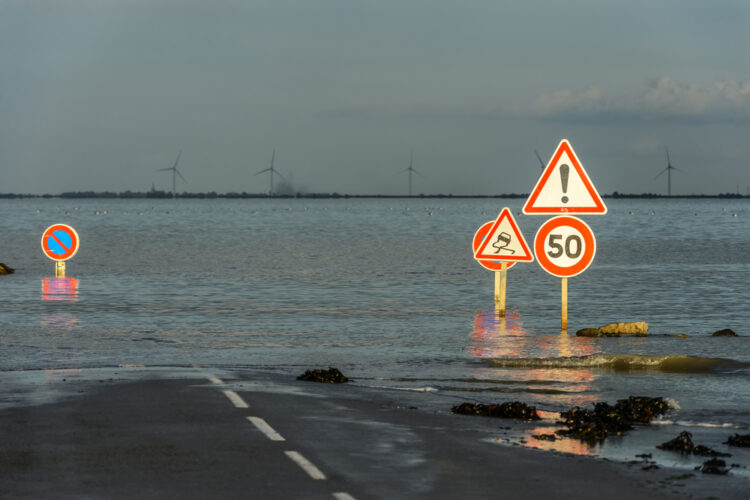On France’s Atlantic coast, a remarkable natural phenomenon has created one of the world’s most unusual roads. The Passage du Gois, a 4.125-kilometer (2.6-mile) causeway connecting the mainland town of Beauvoir-sur-Mer to the island of Noirmoutier, completely disappears underwater twice daily when high tide sweeps over it. With water levels reaching up to 4 meters (13 feet) during high tide, this remarkable road offers travelers a unique but time-sensitive journey.
The Passage du Gois wasn’t deliberately constructed. Rather, it formed naturally over centuries as the two intersecting ocean currents in the Bay of Bourgneuf gradually deposited silt forming a natural ridge high enough to emerge during low tide. The first written mention of this natural passage dates back to the 9th century, though local islanders likely used it even earlier. Before its discovery, Noirmoutier Island was only accessible by boat, making this tidal connection crucial for island inhabitants. The passage first appeared on a map in 1701, and by 1840, a regular connection had been established.
Throughout the 18th century, authorities improved navigation by installing lamps on both sides and building refuge towers for those caught by rising tides. The French government officially designated it as a road in 1832, marking the beginning of its transformation from a dangerous natural crossing to a regulated passage. Major improvements came in the 1930s when the causeway was properly paved and widened, creating the road we recognize today.
What makes the Passage du Gois truly exceptional is its strict natural schedule governed entirely by tidal patterns. The road is only accessible for approximately three hours each day—about 1.5 hours before the lowest tide point and 1.5 hours after it. During these brief windows, pedestrians, cyclists, and vehicles can cross safely.
For the remainder of each day, the Atlantic Ocean reclaims the passage, submerging it under several meters of water. This means travelers must carefully time their crossings according to tidal charts. Modern technology has somewhat eased this challenge, with the Noirmoutier tourist office providing real-time tidal information and electronic signs at both ends of the causeway indicating whether it’s safe to cross.
While an alternative route exists—the Noirmoutier Bridge built in the southern part of the island—many travelers still opt for the unique experience of crossing the tidal road, which saves approximately 20 minutes compared to the bridge route.
Despite warning systems, people occasionally misjudge the tides or experience vehicle problems while crossing. To address these potentially life-threatening situations, authorities have installed a series of elevated rescue towers spaced along the causeway.
These distinctive towers serve as emergency refuges where stranded travelers can climb to safety and wait either for rescue teams or for the next low tide cycle. Clear signage at both ends of the passage displays current safety information, and flashing warning lights activate as water begins to rise.
After the water recedes, another hazard emerges—the road surface becomes covered with slippery seaweed, creating treacherous conditions for both vehicles and pedestrians. Authorities strongly advise against parking directly on the causeway, as vehicles can be quickly swept away by incoming tides.
According to local records, the passage sees hundreds of thousands of crossings annually—in 2021 alone, nearly 388,000 crossings were recorded—yet safety measures have helped minimize serious incidents despite the inherent risks.
The Passage du Gois has gained international fame through several notable events hosted on its unique surface. Since 1987, the annual footrace “Les Foulées du Gois” has challenged participants to race against the incoming tide. Competitors start as water begins to cover the road, with the fastest runners reaching the finish line with dry feet while slower participants must wade through ankle-deep water or even swim the final stretches.
The road has twice featured in the prestigious Tour de France cycling race—first in 1999 and again in 2011. The 1999 stage proved particularly dramatic when a crash on the slippery surface created significant delays for several competitors, affecting the overall race standings.
Beyond organized events, the passage has become a popular destination for shellfish collectors who gather oysters, clams, and cockles from the exposed mudflats during low tide. This traditional practice connects visitors to centuries of local culture and sustainable harvesting. The French government has recognized the Passage du Gois as a protected site of national significance, preserving this remarkable natural phenomena.

